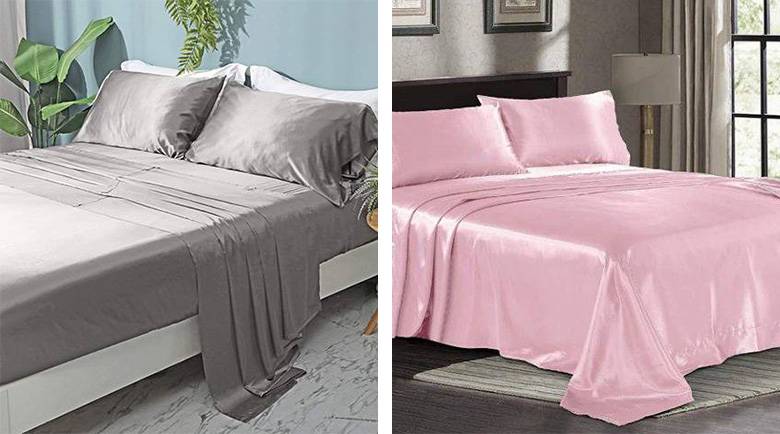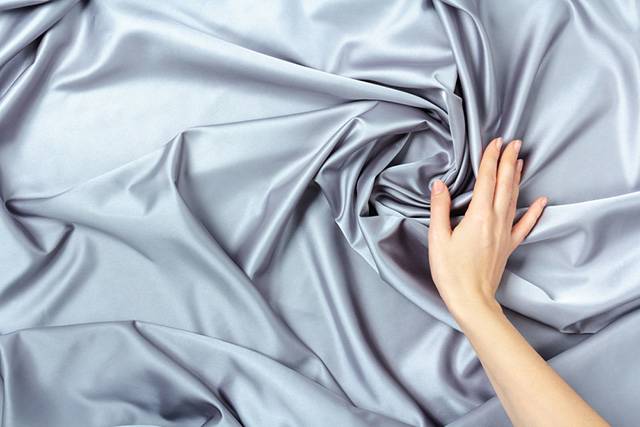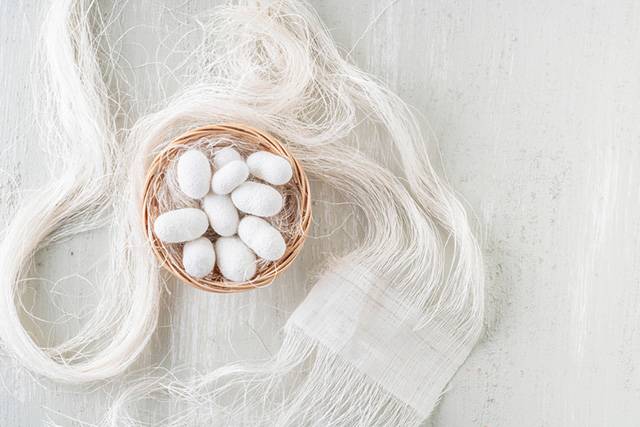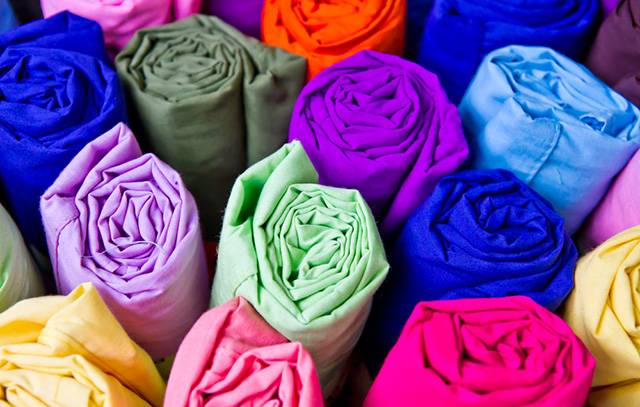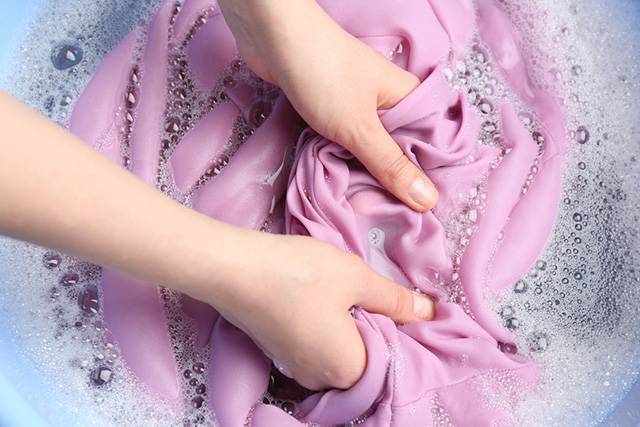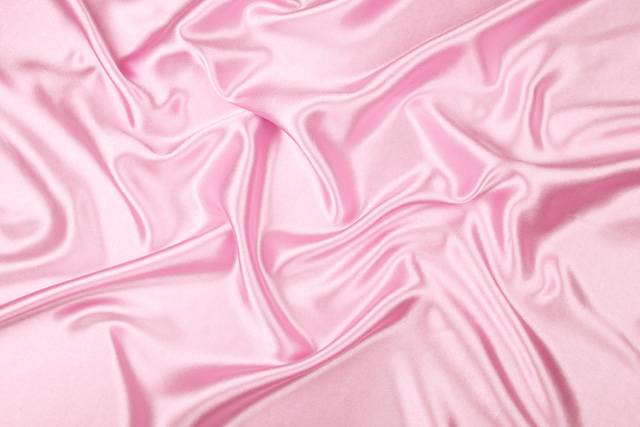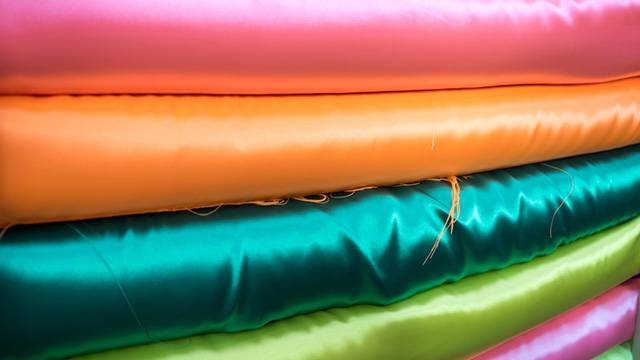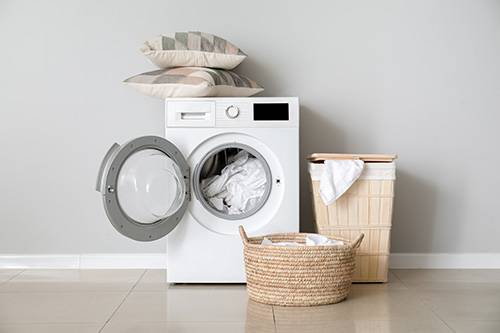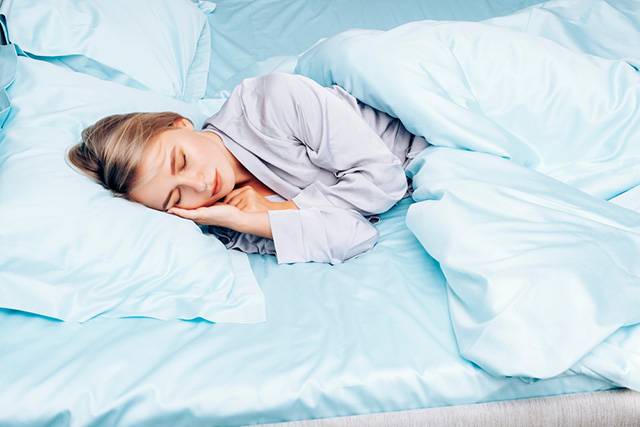Two of the most confusing fabrics out there are silk and satin. They’re both glossy, they’re both soft, and they can both be found used in the same products. So, what exactly is the difference between them?
There is no doubt about it, fabrics can get a little confusing. There are so many different types, weaves, and styles that you tend to get a little lost in the library of variety. A lot of them also resemble one another when, in fact, they’re not. Quality, versatility, functionality, all change based on the fabric you’re looking at. Today, we’re comparing silk versus satin sheets so you can choose which is best for you.
What is Silk?
To kick things off, we’ll start with silk, which is a luxury fabric that has made a reputation for itself ever since it was discovered in China 12,000 years ago. Lots of people have silk in their home, perhaps as a gift from someone else or as a treat for themselves.
— Natural Fibre
Silk is a natural fiber, made from the larva of silkworms. This extraction process is 100% natural, which gives silk the title of an organic product. What happens is that silkworms create a cocoon for themselves made out of a high-protein substance. The pod is taken and turned into raw silk thread.
If you’re thinking, this sounds a little tedious, and you’d be right. The process of creating finely woven silk takes a lot of time and effort, and the fact that it’s all-natural makes it even harder. It is for this reason you won’t find silk cheap, and if you do, you’re probably looking at a synthetic alternative.
— Pricing and Quality
We already know that silk is not cheap, but the next question is whether it’s worth the price? Yes, silk is actually worth the hype it’s given. It is an expensive fabric rooted in comfort and luxurious softness. Naturally made silk is high-quality and unique to the touch and you won’t find anything like it.
Silk is breathable and insulating, making it an all-year option no matter what it’s used in. It’s a good option if you have sensitive skin since it is organic and doesn’t irritate the skin as other fabrics do. You can find silk being used in dresses, scarves, robes, bedding and sheets, pillowcases, and household as well as personal accessories.
Silk is a versatile fabric that can be used in many different things. It’s delicate and soft, yet at the same time, it’s strong and durable enough to handle daily use. Since this fabric is natural, it’s also better at absorbing dye. You can find it in a multitude of colors and patterns.
— Maintenance
Silk is a higher-maintenance fabric than most others since it’s a natural fabric. You have to be very gentle with it, and never leave it out in the sun otherwise you’ll damage it. It’s a hand-wash-only material unless you have a synthetic version or artificial alternative. You have to be prepared for the additional level of care since silk can get damaged very easily. Fortunately, silk gets softer and more luxurious the more you wash and care for it. So, there is repayment for all of the hard effort.
What is Satin?
— Synthetic Weave
Satin sheets are not of a natural fabric, but it can be made out of them. Essentially, satin is a weave that is made out of another type of fabric, either synthetic or natural. It replicates the glossy texture and appearance of silk quite well, having initially been made as a silk alternative for those who could not afford it.
Because of the weaving process, one side of satin is glossy while the other side is dull. This is the main way to tell silk and satin apart. That, and also taking a look at the information tags on products.
Satin can be made out of one or a combination of these materials:
- Silk
- Cotton
- Nylon
- Polyester
- Rayon
- Viscose
As you can see, there is a culmination of natural as well as synthetic fabrics satin can be constructed out of.
— Pricing and Quality
In comparison to silk, satin is a much cheaper fabric. In fact, in comparison to all of the materials it can be made out of, it becomes the cheaper option. This is because the manipulation of the material when weaving it into satin takes away the original form. Universally, satin is known as a cheaper and inexpensive solution.
The actual price and quality will depend on the primary material used, though one rule of thumb to keep in mind is the thicker the weave, the better the fabric. A thicker fabric means it’s more durable, warm, and strong. How thick the fabric is will depend on the fiber content (what material was used to make the satin) and the extent of the yarn twist.
Satin is used in making clothes, costumes, sometimes bedding, and home accessories. Different types of satin will be favored for different products.
— Maintenance
In comparison to silk, satin is much easier to maintain. Once again, this will depend on the primary material and if it’s the easiest to care for or the hardest. For example, cotton and polyester are low-maintenance materials that can be machine washed safely. Silk and nylon may not be the easiest to maintain and may call for dry cleaning or hand-wash.
When not cared for properly, satin does tend to pill easily and shed. Satin can also become expensive to care for depending on how much you use it and how it needs to be properly cleaned. For instance, if satin has to be dry-cleaned and is used as daily bedding, the expense of maintaining it is going to rise steadily.
Which One is Better?
Which one you prefer is entirely based on preference, and perhaps budget. Satin and silk can be used in different situations which you may also need to take into consideration such as clothing vs bedding, or household accessories vs personal accessories.
As bedding, silk is a smooth and soft material that most people find extremely comfortable to lie on. There are also the benefits of less wrinkled skin and tangle-free hair in the morning since it’s so silky, you’ll slip across its surface.
Satin absorbs less moisture which allows it to preserve more hydrated skin and hair throughout the night. It also doesn’t absorb your nighttime creams, so you can implement your beauty sleep treatments while you rest.
Satin is cool to the touch and stays this way throughout the night, so it’s a better option for a cold sleeper. Silk tends to get warmer throughout the night, so it might be better for colder weather or a warm sleeper.
As we have established, satin is a much cheaper option, but it will never have the same feel and effect as natural silk. Satin is easier to maintain, but the expense of dry-cleaning certain types of satin can build up. Silk is safest to clean by hand, but artificial alternatives will allow machine washes.
Finally, silk is organic fabric, while satin is considered a vegan product in most, if not all cases.
The Bottom Line on Silk VS Satin Sheets
Satin and silk are not the same things, that much has been established. There is always going to be a difference between them. Once you’ve tried them out, you’ll realize nothing will ever compare to natural silk, but the convenience of satin is hard to beat. In the end, whichever fabric you opt for will be based on your personal preference and needs. Visit The Sleep Judge today for more info on bedding and sleep health.
Photo credit: Shaposhnikova Anna/Shutterstock; rikur B/Shutterstock;
manasapat/Shutterstock; New Africa/Shutterstock;
Jiffy Avril/Shutterstock; boyhey/Shutterstock;
Yuliya Loginova/Shutterstock; Yuliya Loginova/Shutterstock
